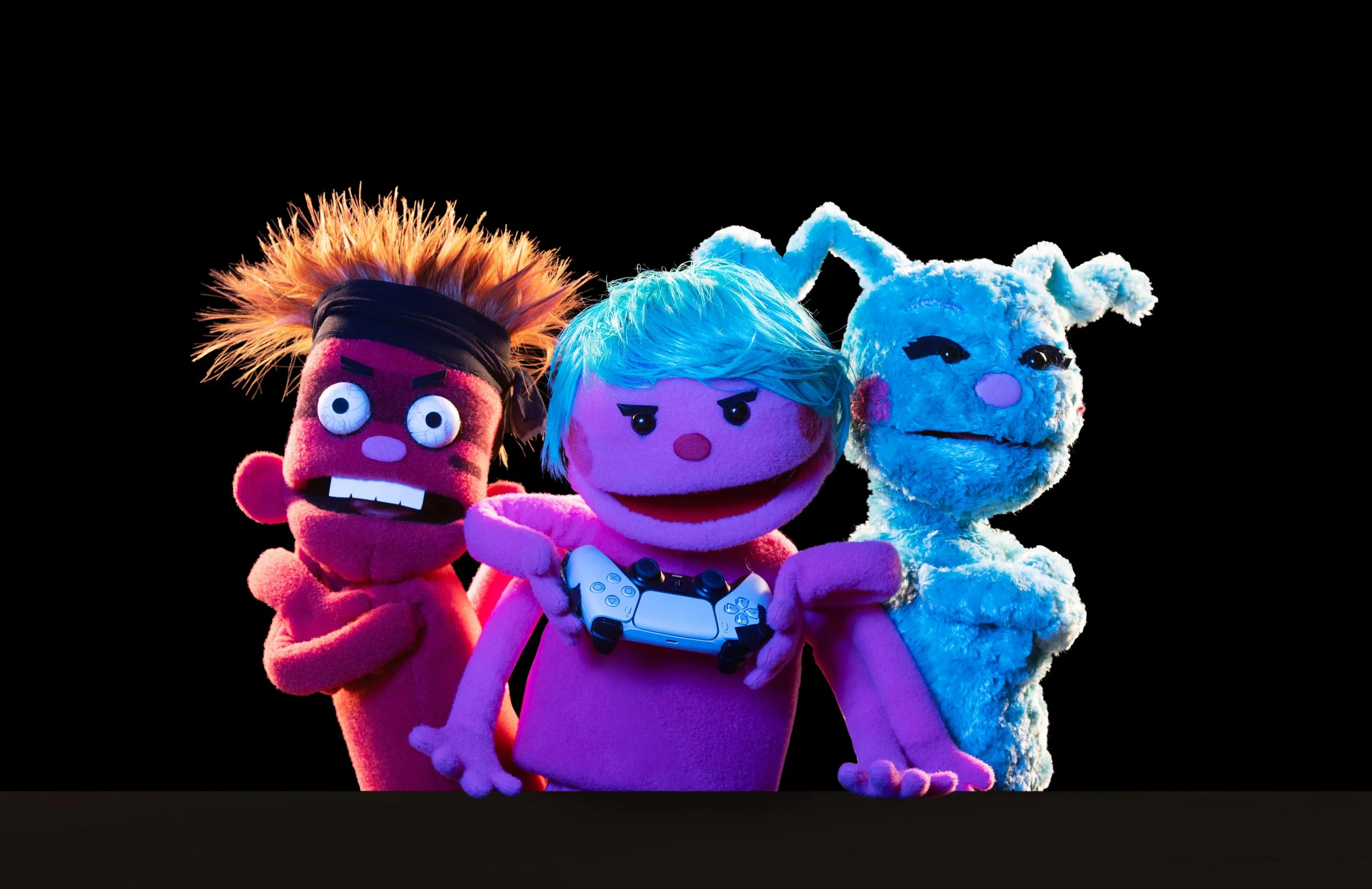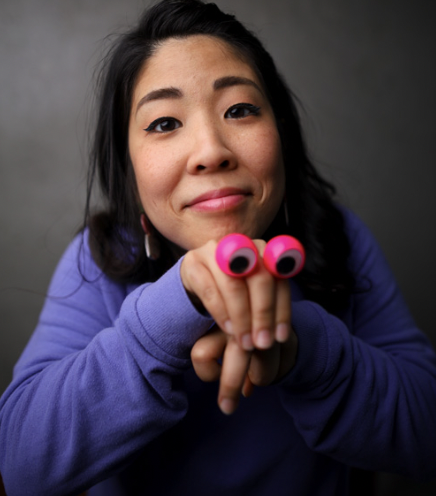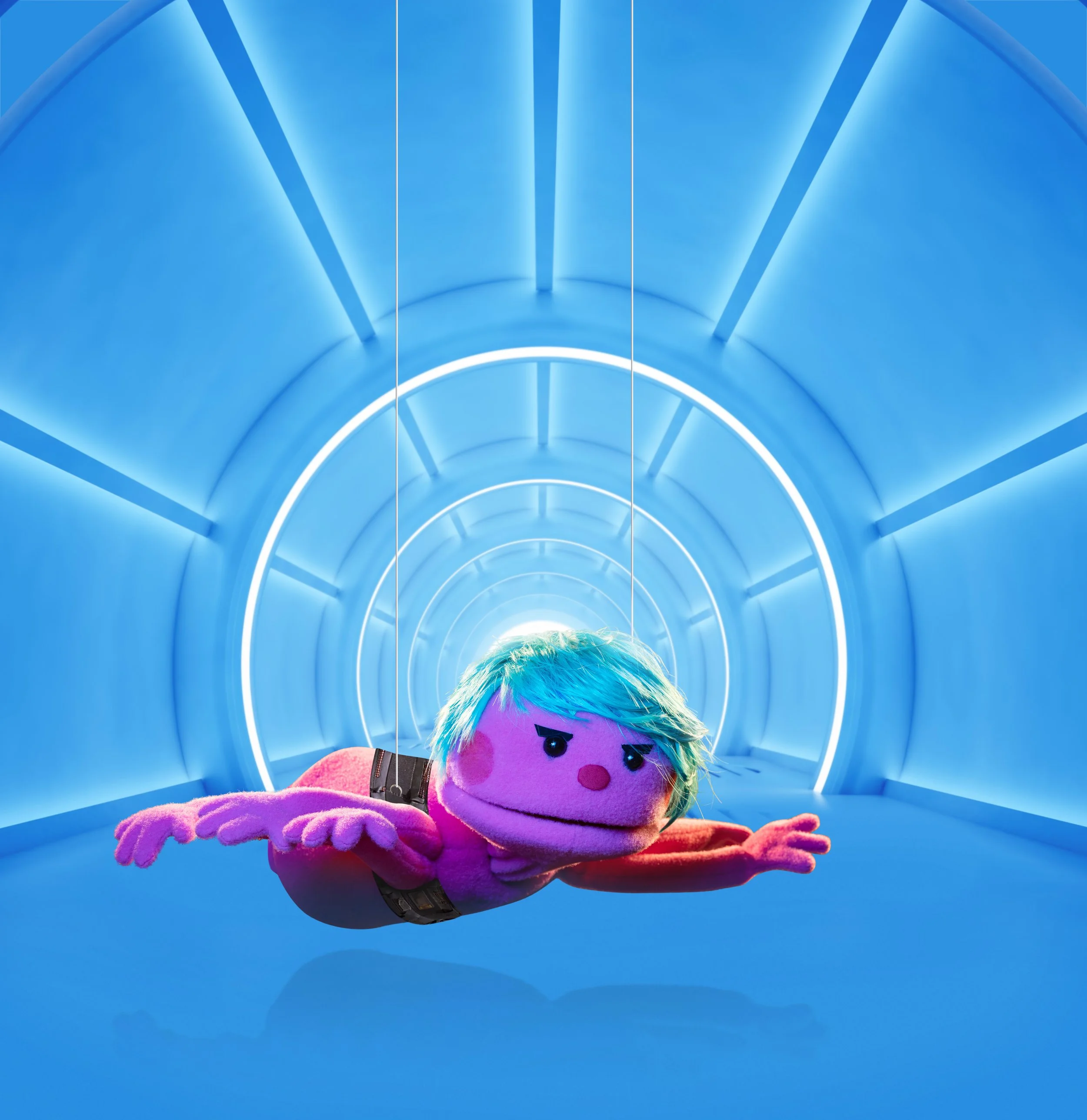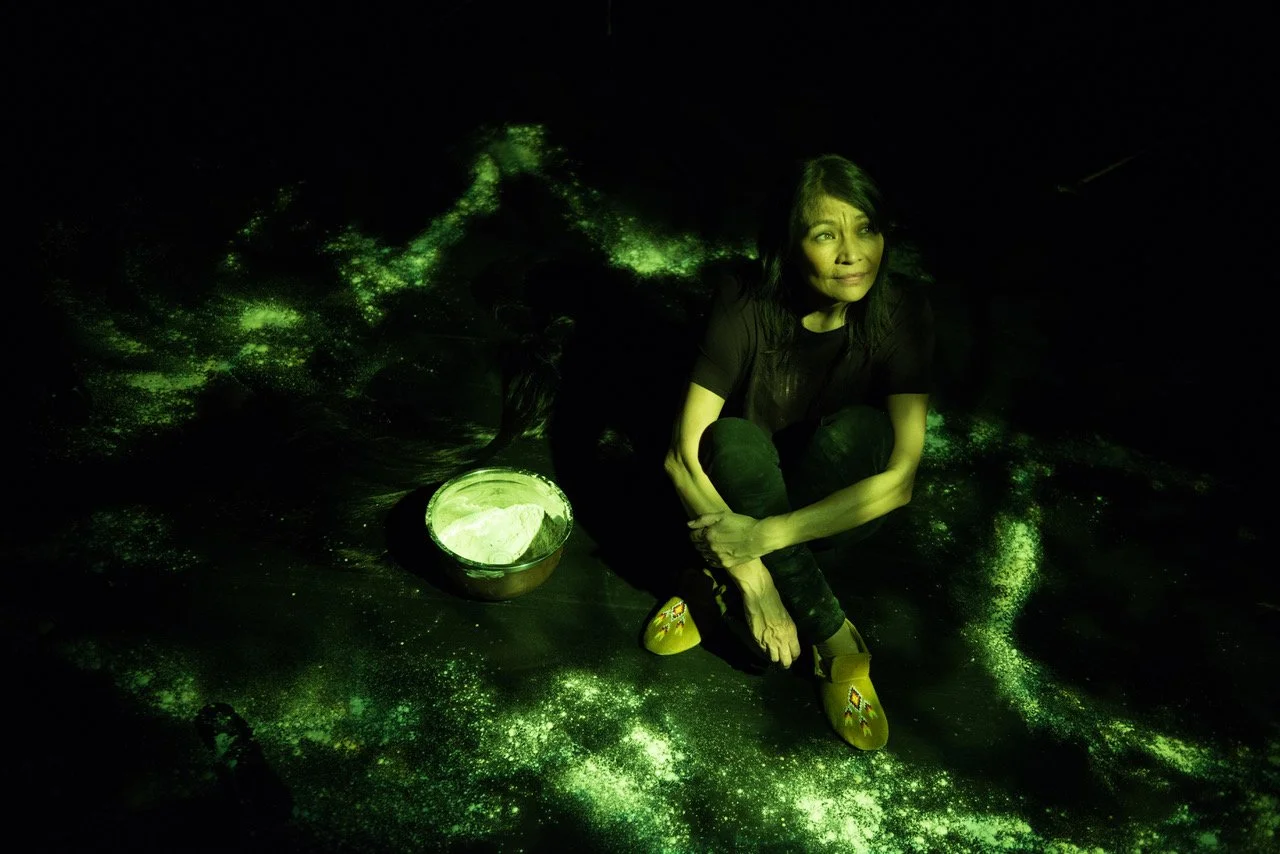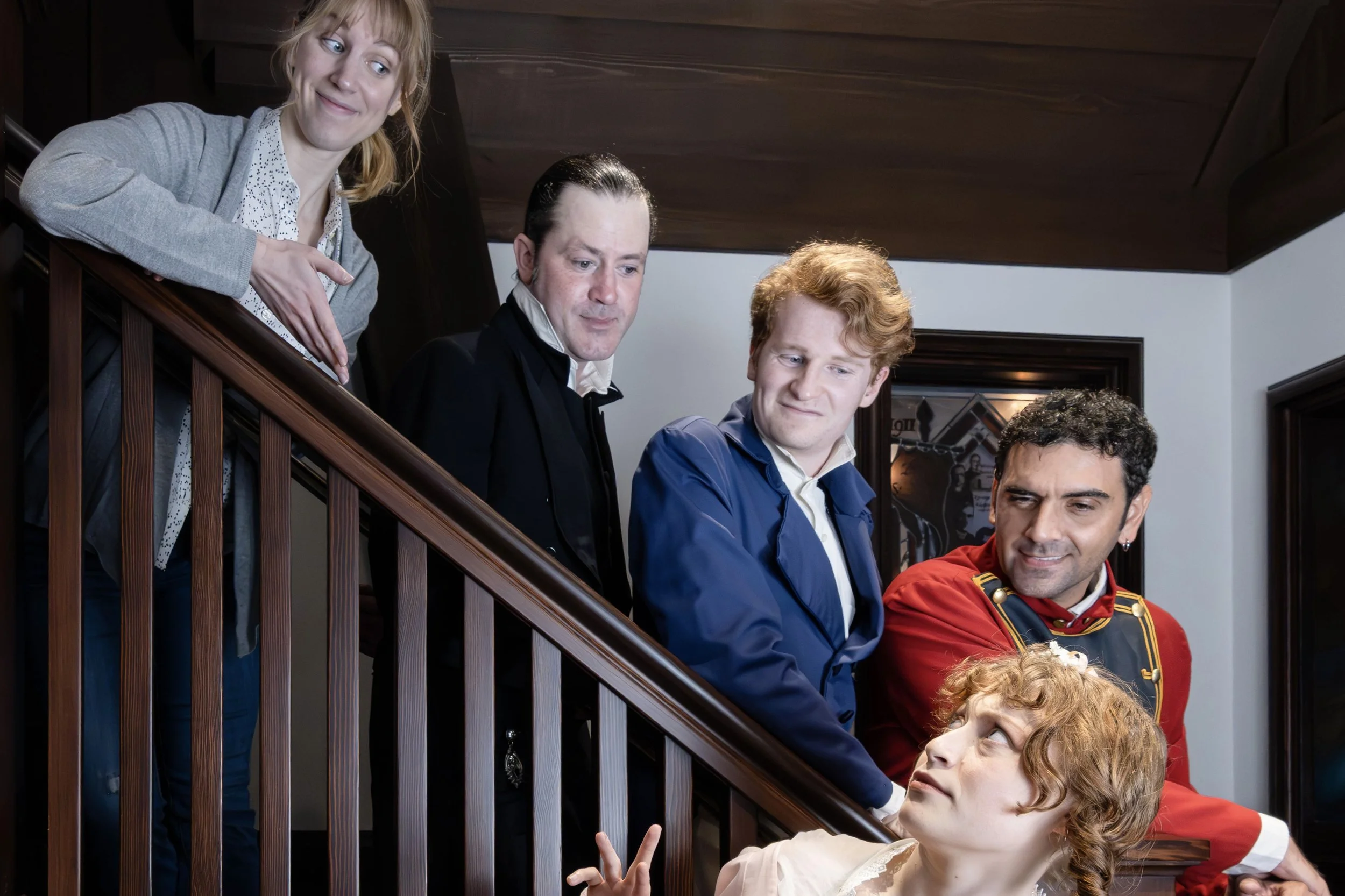Vancouver International Children’s Festival: Division Infinity Saves the World! celebrates kids’ strength
The puppet show is based on real experiences, stories, and art from local Grade 4 students related to the pandemic
Division Infinity Saves the World!. Photo by Emily Cooper.
Vancouver International Children’s Festival (May 30 to June 4) presents Division Infinity Saves the World! on May 30 and 31 at 10:30 am and 12:30 pm; June 2 at 12:30 pm; June 3 at 1 pm; and June 4 at 3:30 pm at The Nest on Granville Island
THE PANDEMIC WAS tough on everyone, but kids in particular had unique challenges, being away from school, friends, play dates, and birthday parties. The arts can be an especially effective way to unpack so many different feelings that went along with the days of social isolation and lockdowns—and a group of local theatre makers has done just that, working with two Grade 4 classes not only to help children process their pandemic experiences but also to lay the groundwork for a lively brand-new puppet show that will have its world premiere at the 2023 Vancouver International Children’s Festival.
Commissioned by the fest, Division Infinity Saves the World! features three puppets named Soda, Chiqui, and Spiderwolf in the namesake classroom of top-secret elementary students who are tasked with solving the biggest problems facing kids all around the globe. Their new assignment is to defeat the evil Cononi-19 virus and bring back all of the get-togethers that young’uns love so much.
The show is based on an idea of director Chelsea Haberlin’s, artistic director of Neworld Theatre, which is producing the piece. It’s created by Shizuka Kai, a Jessie Richardson-winning multidisciplinary artist with a focus on set design and puppetry; actor, writer, director, dramaturge and producer Matt Clarke of Theatre here; and interdisciplinary artist Keeley O’Brien, who incorporates intricate handmade objects with immersive theatre creation and artistic director of experimental theatre company Popcorn Galaxies.
O’Brien and Clarke first met while they were both teaching at Arts Umbrella. Things for Division Infinity Saves the World! got rolling when the two were recruited by the folks at Neworld and began holding workshops for kids at two different Vancouver schools featuring theatre games and writing exercises focused on their pandemic experiences.
“We were lucky to work with two really awesome grade four classes in the development of the show,” O’Brien shares in an interview with Stir. “We were interested in exploring what living through a global pandemic was like from a kid's perspective. The activities we did together were intended to give the kids a chance to express their lived experiences, while at the same time inviting them into the collaboration process to help generate material for the show.
“We did everything from puppet creation to script writing to drawing and painting to drama games to soundscape creation to storytelling,” she says. “I was surprised and touched by how resilient and enthusiastic the kids we worked with are. Although the pandemic had dramatically affected their lives, they had all found their own ways to handle it and there was so much delight and play in our work together.”
Matt Clarke (left) and Keely O’Brien.
Division Infinity Saves the World!, which is geared to kids aged five to 12, or from Grade 2 up, includes pre-recorded audio clips of the school kids interacting with a live actor. Some of the Grade 4 students’ lines that made it into the play verbatim include: “I’m scared of literally nothing”; “Hey I’m Covid and I’m gonna wipe humans off the face of the Earth”; and “Lego takes me to a place of sweet harmony.”
Clarke found the workshops to be not only a ton of fun, but deeply moving, too.
“I love the exercise where we cross the stage with a changing emotion, like ‘Enter sad and by the time you exit you'll change to confused or scared or excited,’” Clarke says. “It's a fun way to show a simple story, and when we asked the kids to cross the stage showing their different emotions over the course of the pandemic, they were able to name some really interesting feelings and also to physicalize those feelings in the way they moved. It was really touching and engaging to see these complex emotional journeys condensed into a short walk across a stage.”
It just so happened the stage was their classroom. Clarke says that their time together also included the making of two lists: one stating five fears surrounding the pandemic and the other with five of the kids’ greatest hopes related to it.
“Each of the kids chose one of the fears and one of the hopes and then wrote a short dialogue between the two of them,” Clarke says. “The scenes were incredible. Like, imagine a sort of abstract little theatre piece between the COVID virus and a kid who wants to get on a plane to go to Taiwan. I want to watch that! The real job was trying to honour and preserve that incredible material as we made the show.”
Central to the story are themes of the brilliance, capability, and resilience of kids. Each character has their own strengths and viewpoints that they bring to the obstacles in front of them.
“From my perspective, this story is important because it affirms that there is no one right way to face adversity, and it celebrates the strengths of kids everywhere,” O’Brien says. “I also think as a society we are still reeling from the shared trauma of the pandemic. Storytelling and creativity are a way to reflect on and process our experiences and find meaning together.
Adds Clarke: “I think it’s important for kids and grownups to reflect on how the pandemic has shaped us these last three years. My personal impulse is to resist spending the emotional effort looking back and to move on and be grateful that the COVID pandemic is over….Those three years were so full of so many feelings. Like, aside from being scared of getting sick and possibly dying, people lost friendships and stopped talking to family members over masks and vaccines. People lost jobs, changed careers, went through financial stress; domestic violence escalated; acts of racism spiked everywhere… It was a lot to go through, right? I think we're all still hurting from all that. It helps to take the time to look back and unpack it a bit. It also really helps to give it a funny name like ‘Cononi-19’ and laugh at it with friends.”
Kai designed three main puppets, Soda, Chiqui, and Spiderwolf, which were constructed by Randi Edmundson. They are Muppet-style hand puppets made of fabric, foam, wire, and other materials. There are also 2D rod puppets (which O’Brien designed) to help animate the stage and visually tell the story. These puppets are not characters but rather objects that come to life, like a Wi-Fi symbol, household items, and a Nintendo Switch. Like many elements of the show, inspiration for all the puppets came from designs and writing by the Grade 4 students themselves.
“The three main puppet characters emerged so beautifully,” Clarke says. “It was such a joy to be looped in on Shiz’s design process, referencing and incorporating all the kids' artwork. I cried when Randi brought the puppets and I got to hold them finally. They’re so alive with so much personality and their own hopes and fears, and then to really see them in the space was very powerful and fun.”
Shizuka Kai (left) and Chelsea Haberlin.
Clarke is hopeful that audience members will feel like they’re a part of the class. “We don’t want to just show kids what Division Infinity is; we want to welcome kids into Division Infinity so that they can take part in the process too and connect their own ideas that can stay with them afterwards.
Ultimately, the two hope that young audiences will see themselves reflected in the characters’ journeys.
“My wish is that kids feel validated to be themselves and inspired to take on challenges in their own ways,” O’Brien says. “The show has some heavy themes, but I also hope the joy shines through too. I hope that audiences experience all the fun and silliness of puppets dancing to the song ‘It's Raining Tacos’ in a cloud of taco-shaped confetti.”
Adds Clarke: “I think it’s a safe and fun opportunity for kids and grownups to reflect on their own journey through the pandemic, so I hope people can connect the show to their own experiences. I also think it's so great to be doing this live, where we can be part of a group laughing and sighing and clapping and breathing together. I hope people feel the goodness of that.
“I guess I really also just hope that kids have fun being at the theatre and that they would want to come back and see more plays,” he adds. “When we value TYA [theatre for young audiences] and create fun and thoughtful kids' shows, we're growing our community.”
The show reminds Clarke of one of his favourite quotes from Mr. Rogers: “Listening is where love begins: listening to ourselves and then to our neighbors.”
“For me, this project has offered lessons on listening,” Clarke says. “It’s something we—I ask kids to do so often in kind of a gross and superficial way. ‘Listen to the teacher’ or ‘Listen to you father’ or ‘Listen to the rules!’ What do we really want them to listen to? What would really make a difference for them to hear? I think maybe ‘I'm listening to you’ is a good start.”
Division Infinity Saves the World!


